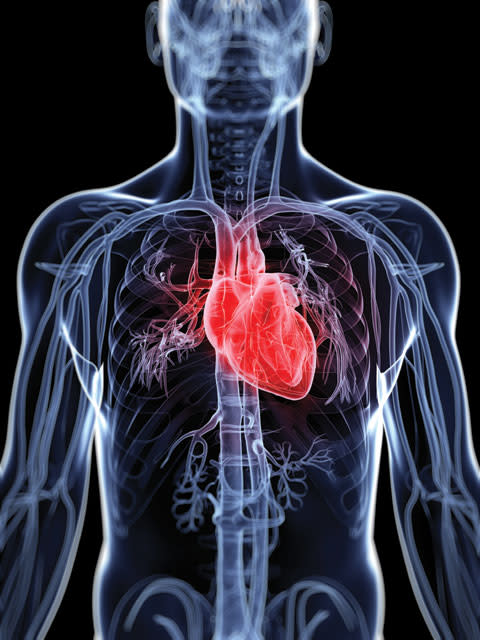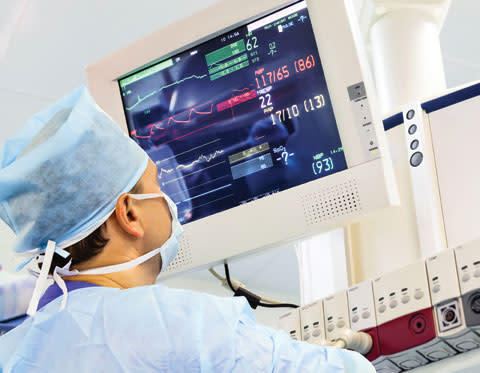Sarasota Heart Specialists on Understanding Atrial Fibrillation (AFIB)
In early June, 71-year-old Navy veteran Robert Sommer of Sarasota addressed a medical condition that had been plaguing him for years.
“I had been experiencing heart pounding, like my heart was going to come out of my chest, and lightheadedness for a very long time,” Sommer says. “I’d try not to let it control my life, but if I bent down and picked something up off the floor, I’d have to stand up very slowly. It was impairing my ability to be active.”
Sommer was experiencing symptoms of atrial fibrillation, also known as AFib, which is an electrical disruption in the pumping rhythm of the heart’s upper chambers. It is the most common heart rhythm problem that cardiologists in Sarasota-Manatee diagnose, and it affects nearly one-fifth of all patients ages 85 and older. AFib can cause fatigue, palpitations, shortness of breath, confusion, chest pains and even strokes.
The latter happened to Sommer four years ago when he suffered a mini stroke called a transient ischemic attack. After 24 hours of in-hospital monitoring, his doctors informed him that he had AFib and needed to take vigilant action.
“They started me out on a drug that controlled the rate of my heartbeat for a year or so, but it didn’t seem to have any significant effect,” Sommer says. “Then we tried anti-eurythmic drugs, and then Tikosyn, which was successful for about a year. Then, every 14 days, I’d still go into 18 to 33 hours of AFib.”
He could not bear the episodes any longer. Dr. Robert Eckart, a cardiologist and cardiac electrophysiologist with Heart Specialists of Sarasota, suggested Sommer consider having ablation (a surgery that works by scarring or destroying the tissue in the heart that triggers the abnormal rhythm). The procedure was a huge success.
“I’m doing great now. I’m swimming and walking and doing all the things that gave me trouble before,” Sommer says. “I would highly recommend it. It changed my life.”
A Confusing Condition
The cause of AFib is not yet fully understood, even by the world’s top scientists and doctors. It is difficult to predict and prevent, and no one is immune.
Even the most rigorous lifestyle—with an optimum diet and exercise plan—cannot always keep AFib at bay, and otherwise healthy middle-aged or elderly patients can develop it for reasons unknown.
“It is the most common rhythm disturbance in all age groups, and our average patient is 75 to 80 years old,” says Dr. George Abernathy, a cardiologist with a private practice in Venice. “I probably see one or two new patients with AFib per week, and I see it equally in men and women.”
AFib causes the atria to flutter at a high and random rate rather than in tune with the lower ventricles, which weakens the blood flow. AFib-related strokes are more catastrophic than strokes caused by any other issues, as they wear down the heart muscle and make patients more susceptible to heart failure.
“In people between the ages of 50 and 59, about 1 percent have AFib,” says Dr. Kenneth Henson, an internist and cardiologist with a concierge practice at Henson Cardiology in Sarasota. “For people over the age of 85, AFib is at over 18 percent. I’m seeing people on a daily basis who have it.”
Doris Stoner, a patient of Abernathy’s, is one of them. Like Sommer, the 77-year-old Venice resident also underwent ablation this year, after nearly three decades of AFib-related problems.
“It started when I was about 50. I play a lot of golf and I could be standing on a tee and my heart would go into AFib and it felt like I was running a race,” says Stoner, whose recent surgery transformed her heart health. “I’m a person with a lot of energy. I like to sew, golf and quilt, and I couldn’t do it because I was so tired. My heart would race at 140 beats per minute for four hours, sometimes seven hours, sometimes 24 hours. After you do that for a couple of days, you feel like you’ve been beaten with a rubber hose.”
Acknowledging AFib
There are two main types of AFib: paroxysmal, the off-and-on arrhythmia; and chronic, the kind that does not go away (another kind, lone, mysteriously affects younger patients). According to the American Heart Association (AHA), AFib affects more than 2 million people in the United States, and catheter ablation has been used for two decades to treat it.
“AFib is mostly a wearing out of the heart. It’s hard to know what stage the AFib is in because some people haven’t been to a doctor in five years or more to have it checked,” Abernathy says. “But when people have obvious symptoms, we catch it pretty early. Most people who feel irregular palpitations, it’s not comfortable for them so they seek help.”
Doctors can diagnose AFib with a standard electrocardiogram (EKG), and if that test proves inconclusive, patients may be advised to wear portable heart monitors.
“Probably 20 to 30 percent of the patients with AFib don’t even feel it, so they’re picked up by their primary care doctor on a routine exam because they have an irregular pulse and it’s found on an EKG,” Abernathy says.
Sometimes, AFib may be associated with an overactive thyroid, a disease of the mitral valve and high blood pressure, Henson says.
High-Tech Treatment Options
Cardiac electrophysiologists are now performing ablations with the ThermoCool SmartTouch catheter (approved this year by the Food and Drug Administration), which more accurately directs a doctor’s hand when applying radio frequency against the heart wall.
The SmartTouch is the first catheter ablation therapy in the United States with direct contact force technology, and AFib patients who have opted for the process have experienced a 35 to 40 percent improvement (better quality of life, decreased need for medication and reduction of stroke risk).
“Electrophysiologists can insert a catheter in the [pulmonary] vein by the groin, which advances it up to the heart. Ablation with a catheter is now a first-line treatment option,” Abernathy says.
Henson says this type of pulmonary vein isolation (or AFib ablation) requires an electrophysiologist because it is such an in-depth procedure. Prior to the SmartTouch catheter, doctors had to estimate the amount of force to be used against the heart, which increased the risk for damaging the heart tissue. Today’s technology allows the right amount of pressure for maximum effectiveness with greatly reduced risk.
“They have to make a hole in the interatrial septum to get to the left atrium; that’s the part of the procedure where experience becomes very important,” Henson says. “When they make that hole, you can actually make a hole in the wall of the heart, which becomes a dire emergency that usually requires immediate surgery. Once they’ve gotten from the right to the left side of the heart, they use a radiofrequency catheter at the origin of those pulmonary veins and they burn the tissue at the entrance of the pulmonary vein.”
Henson says that with today’s technology, in most cases, the procedure will get rid of AFib (he estimates an 85 percent successful result).
“Maybe one in six people will have to go back for a second procedure. The procedure was first done six or seven years ago, and it has been done locally for one to two years,” Henson says.
Ablation is recommended for AFib patients who do not respond to at least one antiarrhythmic agent or other drug. Stoner and Sommer were both candidates because neither of them had any luck with alternatives, so the surgery was the last resort.
The old standby treatment for AFib is either rate or rhythm control (using medications to slow the heart rate to 60 to 100 beats per minute, and using beta blockers), Abernathy says. The latest medications are Amiodarone and Multaq, which slow down the heart rate and convert the rhythm from fibrillating.
“In the left atrium, there is a little pocket called the left atrial appendage, and that’s where the clots form that cause strokes. A device called the Watchman is put in in a cath lab; the procedure is very similar to pulmonary vein isolation,” Henson says. “Typically, every six months, it’s reasonable to have an EKG, but the key to AFib is that the rhythm is just irregular and the interval between two heartbeats is totally random.”
Henson also uses a cutting-edge device called AliveCor, which comes with a plastic phone case with two metal bars on the back. Patients can install an app on their phone, hold the case and watch it record an actual EKG (the results can even be saved as a .pdf file).
“For my patients with intermittent palpitations, it empowers them, and they can even text the results to the doctor,” Henson says. “It’s a fast solution that leads to a quick diagnosis, which is really wonderful.”
By the Numbers
2.7 million Americans had AFib in 2010 and most of these patients were age 50 or older.
12 million Americans are projected to have AFib by the year 2050.
$26 billion is spent on AFib-related medical costs every year in America.
66.8 is the median age for men with AFib.
74.6 is the median age for women with AFib.





